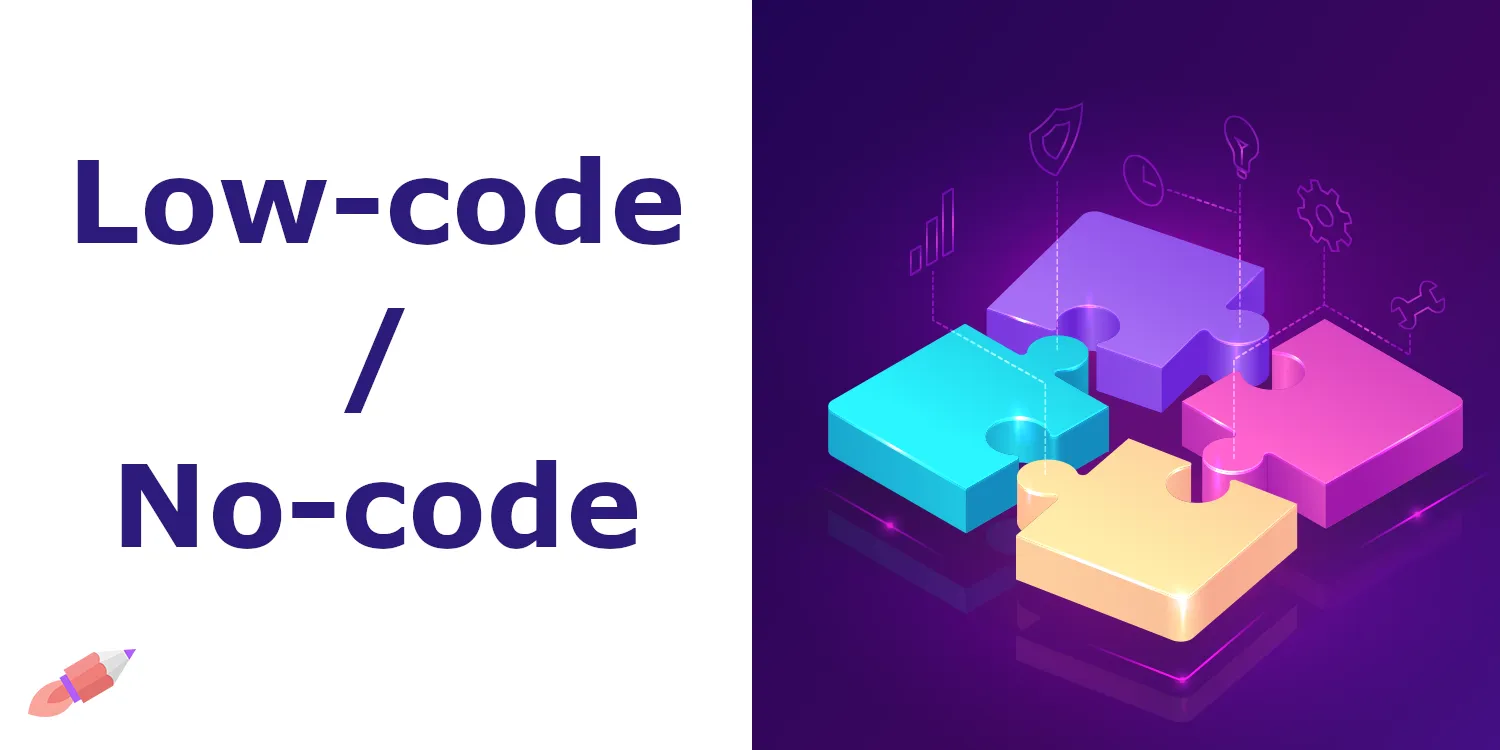The Future of Enterprise Software: Low-Code Application Development
Swati September 20, 2023 0 COMMENTS
Organizations worldwide are turning to low-code enterprise solutions to lead their digital transformation programs due to their industries’ growing demand for new apps and modernization—and the lack of development resources.
With the help of an enterprise low-code application development solution, individuals can create digital experiences, automate procedures, and integrate and expand their apps. This may be done using a visual, drag-and-drop interface to add and arrange prebuilt user experience (UX) components, templates, frameworks, and processes that can be tailored to your needs.
From build to deployment, low-code business software streamlines automation, and simplifies a large portion of the development process so that programmers and non-programmers can produce and distribute production-ready products. According to Gartner®, its widespread usage is expected to continue to rise in the years to come. Global revenue streams are “projected to total 26.9 billion in 2023, an increase of 19.6 percent,” they say.
Table of Contents
Why will low code rule the future?
The technology of the future, enterprise low-code software, is already gaining popularity. This has never been more obvious than in the case of the continuing COVID-19 epidemic, which has required several companies to use contemporary technology to react and adapt to widespread shutdowns.
In addition, the pandemic sparked the creation of hitherto unheard-of experiences and apps like COVID-19 test screeners, health surveys, and monitoring systems. Low-code technology gave them the quickness and adaptability they needed to respond to unforeseen events as they happened.
Significant sectors of the economy increasingly use low-code software, including transportation, financial services, retail, and others, to develop and manage various apps and digital solutions.
While automobile manufacturers develop applications to help with quality control, consulting firms utilize low-code technologies to provide automated solutions for customers looking for emergency loans.
Workers worldwide continue to develop internal tracking and reporting systems, sale and inventory repositories, and anything else that can address persistent business difficulties in their company using low-code solutions.
Here are some predictions for where low-code platforms can lead us next as businesses continue to engage in even more modernization:
-
More automation that is driven by business:
One of the main forces behind low-code growth is already business-driven hyper-automation, and this trend will continue to expand. Business users will continue to fuel the growth of low-code applications by creating tailored apps to serve their unique operational demands in 2023 and beyond.
-
Improved remote or hybrid work support:
More and more individuals are joining the full-time distance workforce as workplaces, classes, and institutions still need to be more populated or closed.
Low-code platforms will enable businesses to provide hybrid and remote workers with the infrastructure and tools required to operate independently and collaborate from home.
Capability for AI and machine learning:
Low-code technologies will enable data scientists, business users, and developers of all skill levels to integrate AI capabilities into their products without requiring machine learning knowledge.
-
More internal app creation
Low-code technologies simplify creating unique apps internally by decreasing the entrance hurdle. As a result, businesses won’t be as dependent on independent contractors or ready-made goods and services for their app development requirements.
Improved results for developers:
Low-code technologies let developers create apps more quickly by automating repetitive procedures and standardizing app lifecycle management, governance, and admin processes. Developers will have more time to concentrate on more imaginative projects, raising the worth of their labor.
-
A low-code ecosystem that is expanding
Low-code technology will develop together with its supporting community and environment. As a result of widespread adoption, businesses will feel forced to share the parts, frameworks, tools they’ve developed, and best practices for creating successful, scalable apps.
Thanks to low-code app development, all sectors continue to see rapid growth and digital change. According to a news release from Gartner, 80% of technology goods and services will be developed by people who are not technical experts by 2024.
Conclusion
Businesses must quickly adapt to the constantly changing business environment and shifting client requirements. No-code/low-code platforms let business users rapidly modify applications, unlike traditional development.
Applications may easily be updated and redesigned because of no-code platforms’ straightforward drag-and-drop development capabilities. This enables businesses to profit from market opportunities while minimizing any risks.
The upcoming trends in software development include no-code and low-code. In the future, citizen developers will create increasing applications utilizing no-code and low-code platforms, offering the necessary governance for growth across all business operations.
Latest Articles
 Laura Ingraham Husband James Reyes: Why …In BiographyApril 17, 2025Laura Ingraham is a well-known conservative […]
Laura Ingraham Husband James Reyes: Why …In BiographyApril 17, 2025Laura Ingraham is a well-known conservative […] Zach Top Wife Mystery Solved! Meet the W…In BiographyApril 16, 2025Zach Top’s music has that classic country feel that […]
Zach Top Wife Mystery Solved! Meet the W…In BiographyApril 16, 2025Zach Top’s music has that classic country feel that […] What Is a Parcel Locker? The Game-Change…In TechnologyApril 16, 2025Missing packages? Porch pirates? Missed delivery slips […]
What Is a Parcel Locker? The Game-Change…In TechnologyApril 16, 2025Missing packages? Porch pirates? Missed delivery slips […] Dawn Staley Relationship Rumors: What’s …In BiographyApril 15, 2025When it comes to iconic figures in sports, Dawn Staley […]
Dawn Staley Relationship Rumors: What’s …In BiographyApril 15, 2025When it comes to iconic figures in sports, Dawn Staley […] How Window Tinting Affects Driver Visibi…In TechnologyApril 11, 2025Introduction: Beyond Style — The Functional Side of […]
How Window Tinting Affects Driver Visibi…In TechnologyApril 11, 2025Introduction: Beyond Style — The Functional Side of […] Vaishnav Tej Wife, Age, Family, Girlfrie…In BiographyApril 11, 2025Vaishnav Tej wife: There is always more to know about […]
Vaishnav Tej Wife, Age, Family, Girlfrie…In BiographyApril 11, 2025Vaishnav Tej wife: There is always more to know about […] Nick Sandmann Net Worth, Biography, Heig…In BiographyApril 11, 2025Young Nick Sandmann, catapulted into the media […]
Nick Sandmann Net Worth, Biography, Heig…In BiographyApril 11, 2025Young Nick Sandmann, catapulted into the media […] Cold War Timeline: The Real Story Behind…In HistoryApril 4, 2025If you’ve ever wondered how we ended up with the […]
Cold War Timeline: The Real Story Behind…In HistoryApril 4, 2025If you’ve ever wondered how we ended up with the […]
stopie.com is a participant in the Amazon Services LLC Associates Program, an affiliate advertising program designed to provide a means for sites to earn advertising fees by advertising and linking to Amazon.com.
Clicking on an Amazon link from stopie.com does not increase the cost of any item you purchase.
We will only ever link to Amazon products that we think our visitors may be interested in and appreciate learning more about.
